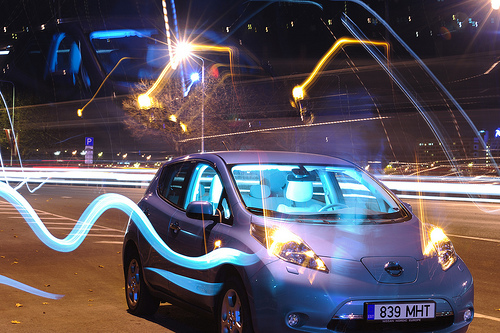Stop Funding Nissan Leaf
Sometimes I get figuratively trashed for regularly not liking new technology and all the wonderful metal usage that comes from it. I spent the weekend thinking about LEDs and then I started to think about Nissan Leafs...and my mind wandered into what the government could do by picking the right projects to support, rather than the wrong projects.
I have a medium belief that if the US government took the money it was spending on tax credits for Leafs and put it into LED light bulbs, we could really make an environmental impact and save on energy bills for struggling families.
The three main points with respect to newer lighting technologies are:
-
CFL (compact fluorescent light) bulbs are toxic bundles of mercury and I can assure you that they are not being disposed of correctly in almost all cases.
-
LED bulbs are $5 per bulb (they are currently $9.95 for 40 watt equivalent) from a cost point of view of being competitive with CFL bulbs on the free market.
-
Shifting from CFL to LED standard would save 33% of the nation’s lighting costs.
LED bulbs cost $9.95, save 3 - 4 watts per hour turned on, and last four times as long as CFL bulbs. However, it takes the full life of the bulb to pay them back at current prices. If they switched to $5 per bulb, payback would be in a reasonable timeframe.
In the meantime, I am having a hard time figuring out the Leaf’s footprint advantage. The best case I can see, based on lots of articles that have covered the electric vehicle, is that the Leaf is the equivalent of going from a 35 mpg car to a 50 mpg car. Assuming the car lasts for 150,000 miles, that saves 1,200 gallons of gas equivalent, or about 11 tonnes of carbon. However, we can get 50 mpg from lots of other cheaper technology, like diesel. Look at the UK: their average mpg is 10 gallons more than the US. (Granted, given their high fuel costs, they do need much better gas mileage.)
The government subsidizes a new Leaf for $7,500 for any buyer, and I think that money would be better spent on driving the LED industry to the mainstream.
I think we should take some of the Leaf subsidy money and do a one- to two-year LED subsidy program to get rid of CFL bulbs. A $5 instant tax credit per bulb will get many of the nasty CFL bulbs replaced and for the same tax credit you get for buying a Leaf, we would replace 10 tonnes of carbon over the life of the bulbs. The carbon savings on the light bulbs assumes a 50/50 coal/natural gas power production for the electricity it consumes.
We would also probably speed up the replacement of all CFL bulbs by two to five years, which would save 158 billion megawatts of electricity per year. Current lighting use is about 461 million megawatts (http://www.eia.gov/tools/faqs/faq.cfm?id=99&t=3). Replacing 100% of the current CFL bulbs would remove 117 million tonnes of carbon per year.
On the same basis (using the same subsidy), if the Leafs were to remove 117 million tonnes of carbon per year versus an internal combustion engine car, that would be the equivalent of 100 million new electric cars on the road. Clearly we are not achieving anywhere close to that number of electric cars with the subsidies given to the Leafs and nothing projects that as being even possible.
Instead of subsidizing Leafs, let’s spend $5 billion on LED bulbs to create a limited $5 tax credit per bulb. Once the full subsidy is used up, tax credits won’t be given anymore. However, I bet you we will remove 50% of the CFL bulbs over the next five years and that’s like putting 50 million electric cars on the road. Additionally, it significantly reduces the mercury in everyone’s homes.
This will allow every household in America to buy 7.5 bulbs on average, which would drive the price of the bulbs down to the point where removal of the tax credits would leave the demand in place for the long-term.
Defund the Leaf, and other stupid subsidy programs, and start to fund LEDs. Once we replace all the CFL and incandescent bulbs with LEDs, then we can move onto more expensive forms of environmental reform.



Comments